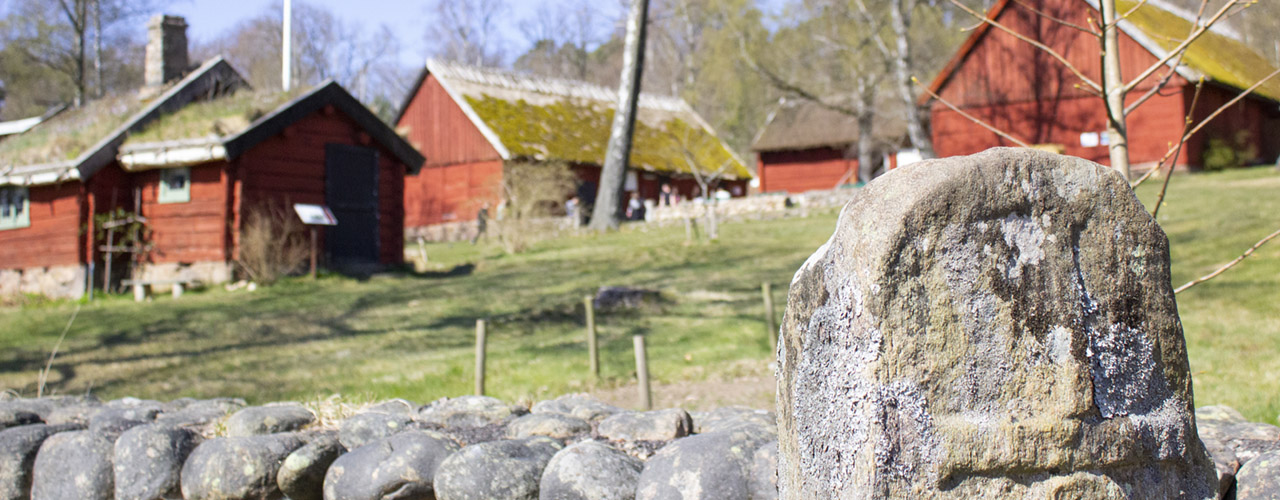
Friluftsmuseet Hallandsgården
Hallands Konstmuseum (Halland Art Museum) also manages Friluftsmuseet Hallandsgården, an open-air museum, located on Galgberget, a hill in central Halmstad. Hallandsgården was founded in 1925 and is a charming destination where you can experience life in times gone by. Wander among the historic buildings on your own, with an audio guide, or join one of our knowledgeable guides. The site also features a summer café and a popular playground.
Visit Hallandsgården
The grounds are open all year round. The open-air museum is open daily June 6-August 10, 12-4 pm. Admission is free unless otherwise stated. This summer’s programme will be published here during the spring.
Guided Tours
Join a free guided tour of the buildings at Hallandsgården.
General tour of the open-air museum: 1 pm
Family tour for children accompanied by an adult: 2:30 pm
The café at Hallandsgården
The café at Hallandsgården is run by Ekoteket and is open Thursday to Sunday, 12-4 pm in May and August. During peak season (June 6-August 10 ) the café is open daily from 11-4 pm. Enjoy coffee and waffles with cream and strawberry jam. In addition to pastries and sandwiches, the menu includes organic ice cream, savoury waffles and light lunch dishes. In case of bad weather, there are a few cosy indoor seats.
To contact the café, call +46 (0)70 773 34 34.
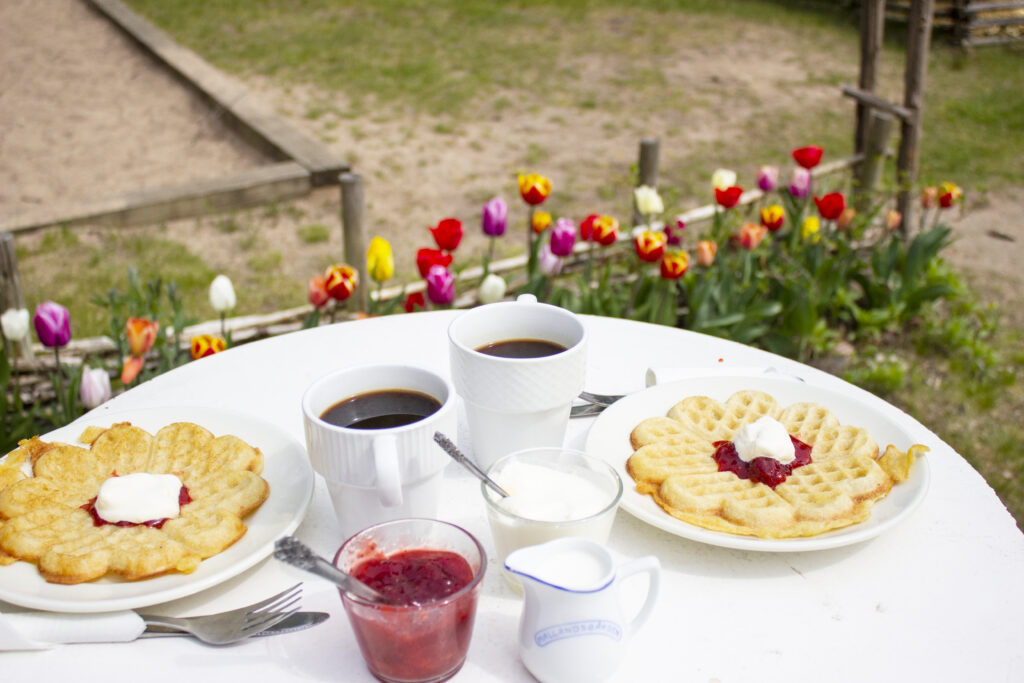
Getting to Hallandsgården
The open-air museum Hallandsgården is located on Galgberget in central Halmstad, right next to the hospital area.
Address: Sofiavägen, Halmstad
Bus stop: Lasarettsvägen
GPS coordinates: Lat N 56° 40′ 51.34″ Lon E 12° 51′ 3.2″
Buildings
Below, you can read about the different buildings and their history.
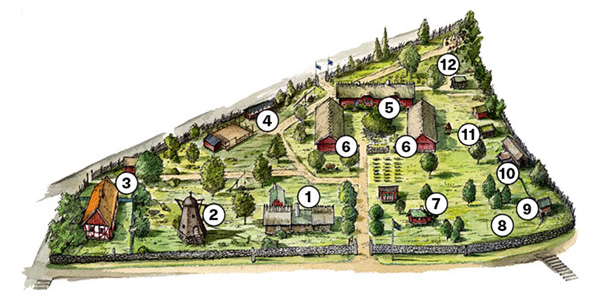
1. Hörsåsstugan with brewery
Ten wagons and one sledge, three horses, three cows, two oxen and three calves. Ten sheep and five pigs. The estate inventory from 1850 reveals details of a prosperous farm in the countryside in Halland. Hörsåsstugan is the oldest building at Hallandsgården dating back to the beginning of the 1700’s. The house type (ryggåsstuga) is known from the middle ages. These houses often lack direct outer doors and this one has only one window. The structure has energy saving rooms on the short sides – a necessity as firewood was scarce and had to be brought in from Fröllinge manor ten kilometers away. In the brewery beer was made. Formerly spirits were distilled on these premises, and later clothes were washed here.
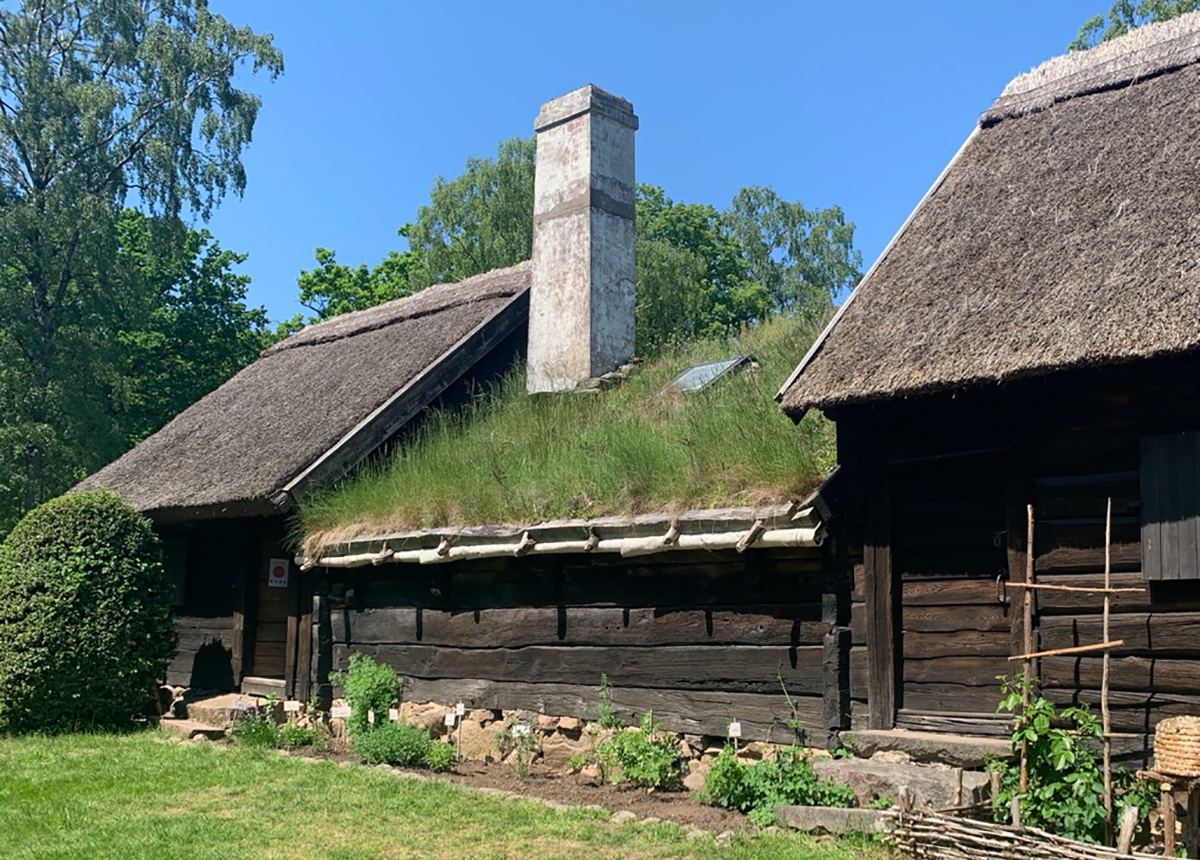
2. Windmill
This windmill was originally built before 1841. Morup lies along the coastal plain where it was very suitable to erect windmills. At one time there were at least twelve windmills standing here. This is the oldest of them. This type with the rotating top section is a Dutch design. The local farmers paid the millowner to have their grain milled to flour and the owner paid a miller to work in the dust and racket from the grinding stones and wooden cogwheels. A storm in the 1930’s broke the original arms and new ones were not made until 1984. The storm ”Gudrun” in January of 2005 broke them once again.
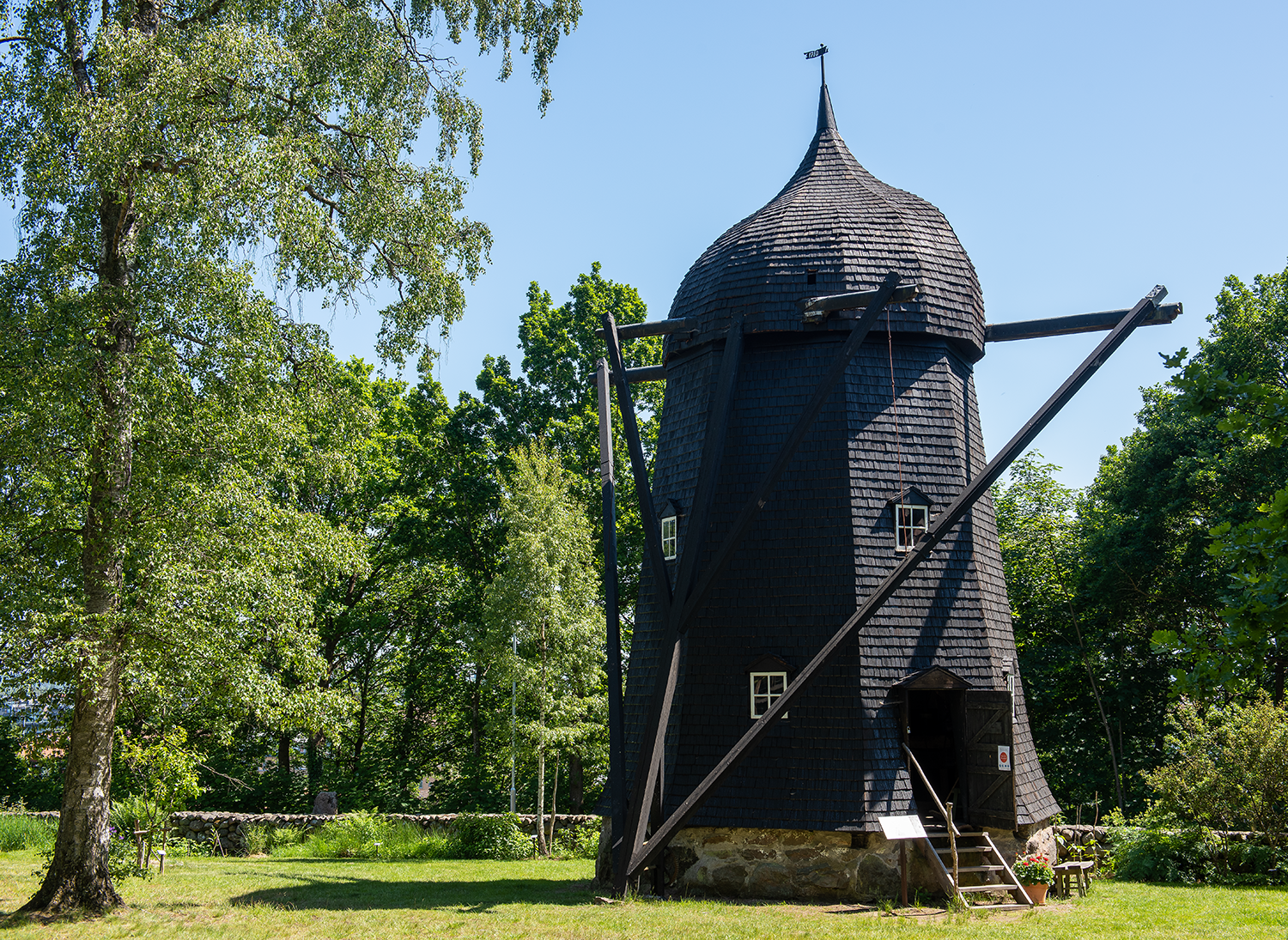
3. Eldsberga schoolhouse
Erected in 1843 this is one of the oldest remaining elementary school buildings erected specifically for that purpose (subsequent to the 1842 law on public education). The schoolhouse was a gift from the owner of Stjärnarp manor and the parish gladly accepted the offer of this modern building outfitted for the education of the young with one classroom and a spacious apartment for the teacher. As thanks for also giving furnishings and materiel, the owner of Stjärnarp manor was allowed to pick the first teacher – 21 year old Magnus Gren was chosen. Today the classroom is outfitted for teaching according to the Lancaster method, which was popular around 1850. It has a bench with a sand box for writing practice and other equipment for teacher’s assistants, so called monitors. Originally the roofing was straw.
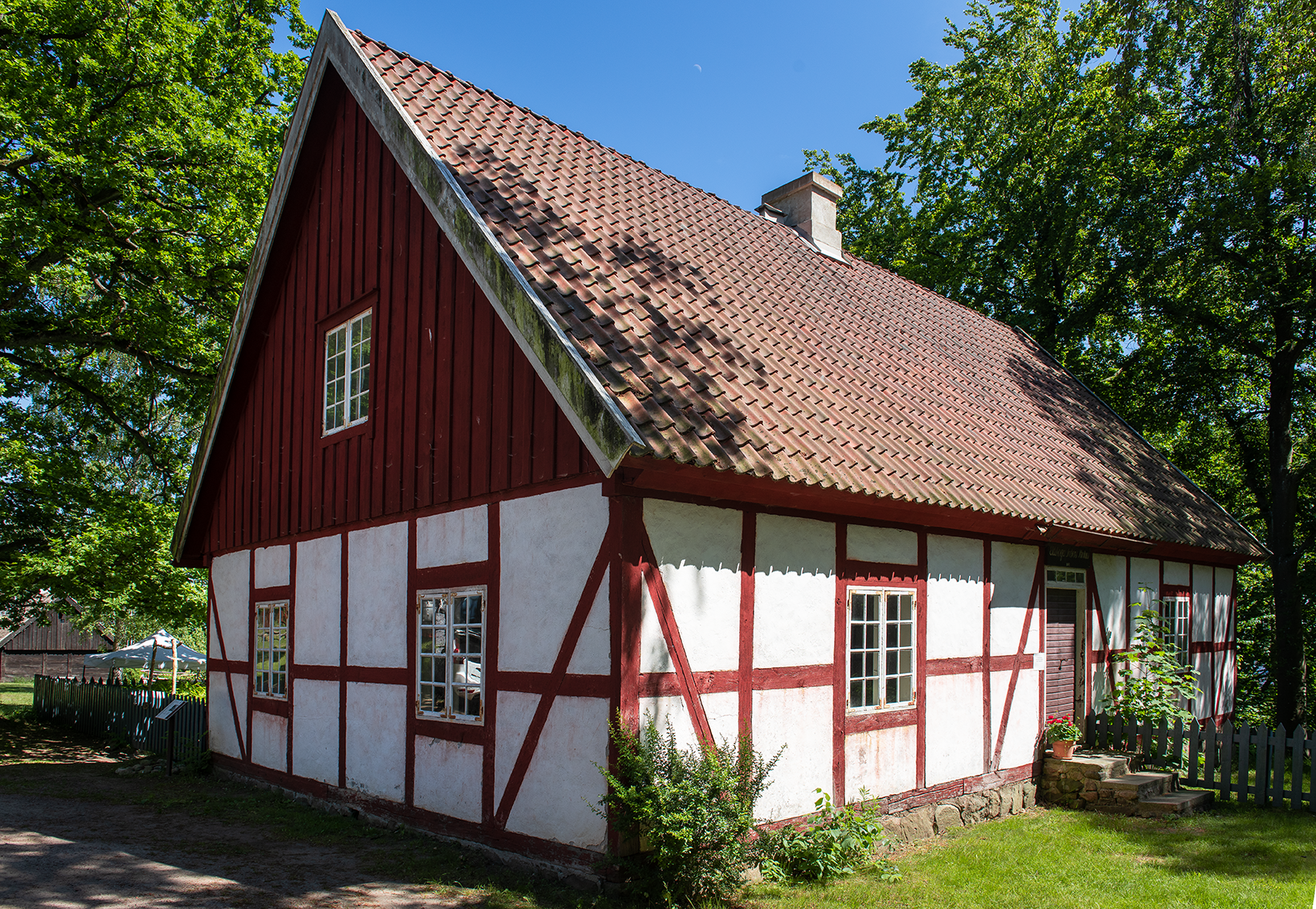
4. Market shed
The market shed comes from Gunnarp parish in Falkenberg Municipality. Markets or fairs were held almost without exception every year in Gunnarp since the middle ages until the last one in the autumn of 1953. Sheds were built for the traveling vendors on the fairgrounds. No one knows just when this one was originally set up, old sheds were repaired and newer ones built from reused lumber, but no doubt the sheds from the beginning of the 1800’s looked like this one. The fairs back then were not only shopping centers but playgrounds and party places, meeting places and offered a chance to hear news from far and wide as well as an opportunity to hear new songs.
5. Krafsagården
The splendid Krafsagården was alongside Hörsåsstugan the core of Hallandsgården when it opened in 1925. The farm from northern Halland once housed wealthy farmers, but decades before being moved here, the rooms of the house had been used for grain storage and as a pigsty. The house was built around 1800 and once had paneling covering the timber walls and an outhouse on one of the short ends. The café guests inside can still experience some of Krafsagården’s former splendor.

6. Barns
When Krafsagården was brought to Hallandsgården, the only remaining barn was in wretched condition. These buildings originate from one single long structure that was divided into two with hayloft, stable and room for a farmhand. The stable interior probably comes from a third house. It has been suggested that the barns was built from timber that had washed ashore which would explain the many holes.
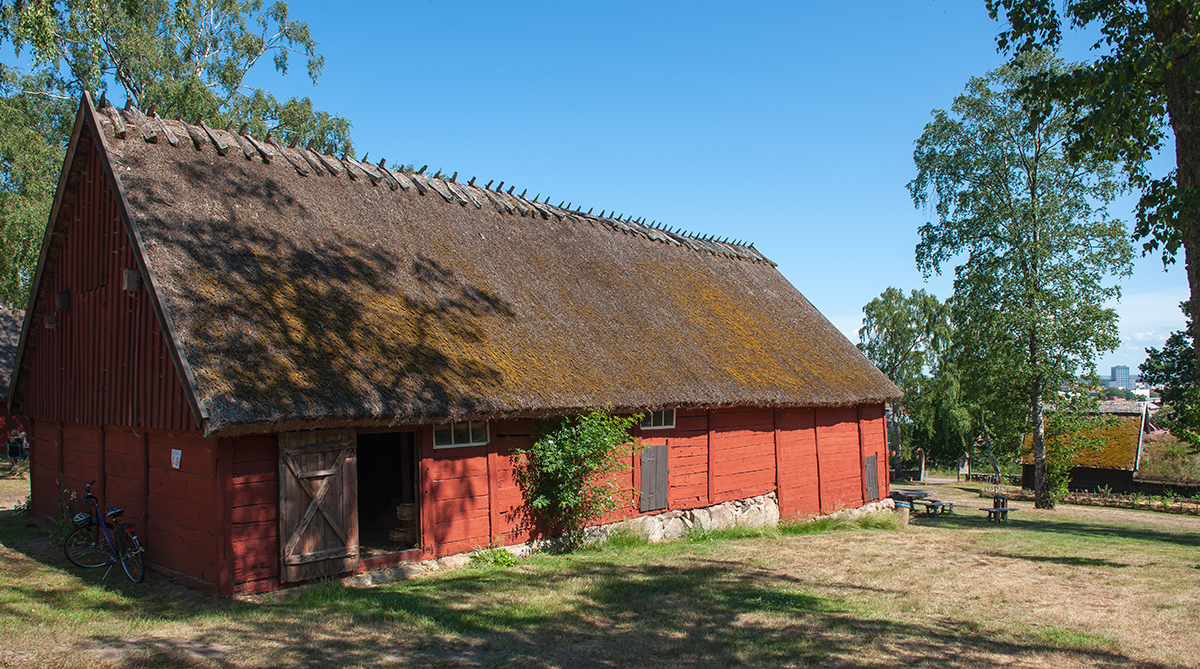
7. Backstuga Måsared (now called Mossared)
One hundred and fifty years ago, six people were living in this cottage, which was built in 1836. The tiny front covered entrance was built after the cottage was re-assembled here to give the involuntary guest Nelly a somewhat better situation. She was forced to work here as a caretaker and storyteller by her employer the industrialist Wallberg. The cottage tells a tale of poverty but also of the ability to survive in a meager countryside.
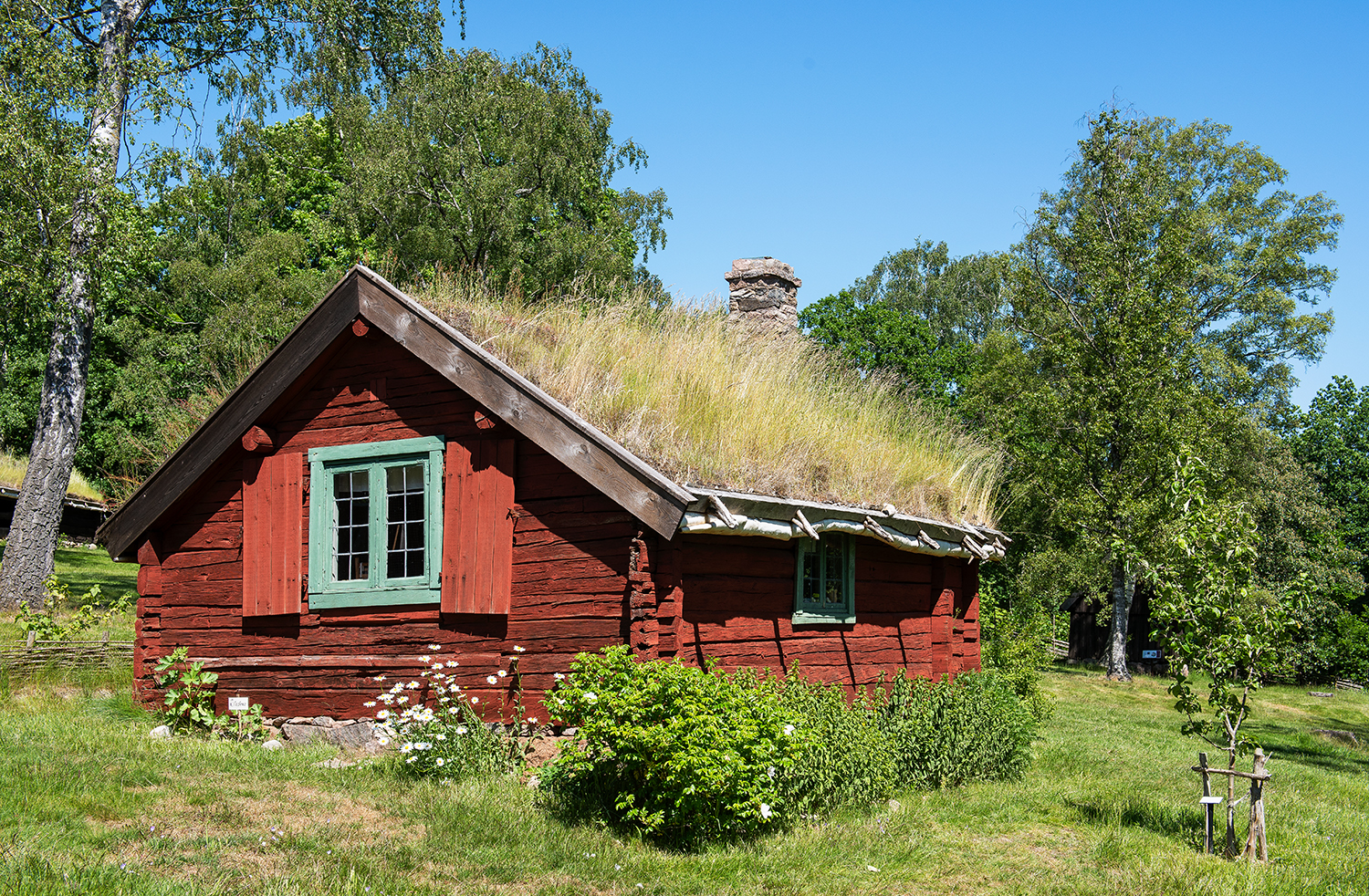
8. The ancient park
The stones on the ground in the ancient park show traces of human acitivity. We still lack knowledge about when many of these rock carvings were made or exactly what they were used for. Perhaps the grooves were used for sharpening stone tools or metal implements. Perhaps they were used in religious ceremonies. It has even been suggested that they may have been used in connection with astronomical observations. The beautiful grinding stone, however, is simply a tool for grinding flour.
The figurative rock carving era in Halland was during the Bronze Age, while cup marks have been dated to both before and after this period.
Along the outer wall of Hallandsgården there is also a collection of milestones. In the past, they were placed next to major roads to indicate distances to travellers, just like our present-day road signs.
9. Water powered flour mill
A mill of this kind with a vertical axle is designed to exploit fairly feeble water flows from streams and brooks. The horizontal water wheel (compare it to the sawmill) drives the millstone to grind grain into flour. Carved inside our mill are the letters BHS and OHS along with the date 1886. This tells us that it was built this year by the two brothers Bengt and Olof Hansson who both lived on the farm next door to Ebbared. The mill was purchased in 1917 and was the first building set up at what later has become Hallandsgården.
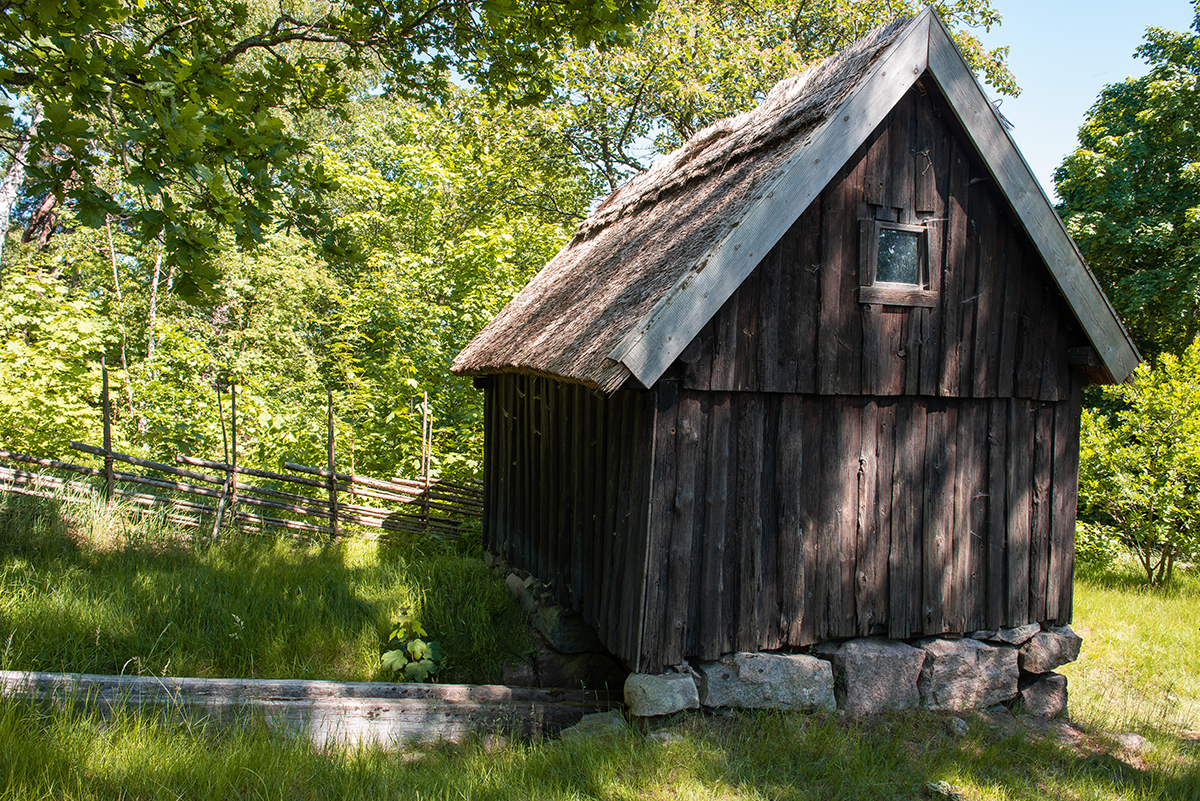
10. Water powered sawmill
When the last vanishing remains of the agrarian society was gathered and placed in this open-air museum the first inklings of industry were also collected. This water powered sawmill with it’s mechanized feeder has a complex and innovative technology which allows the oscillating frame with saw blades to swing up and down as the stock is fed and cut into boards. Our mill was built sometime between 1840 and 1850 and if there were a flow of water it still would be able to cut lumber.
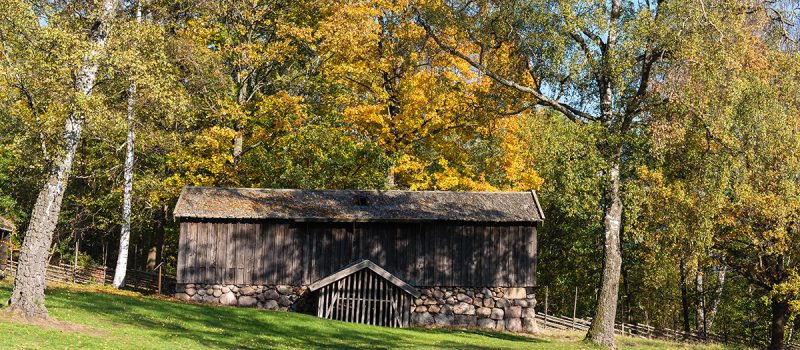
11. Flax drying kiln
The kiln has been expressly constructed for one of the stages in the long process of converting the flax plant into fine and practical linen cloth. The kiln has a hearth (without a chimney) which was heated with a wood fire the day before the retted (kept wet for weeks) flax was spread in here to dry. Hemp which is processed in a similar manner to flax was also dried in here. This house was built at a safe distance from the main farm building due to the fear of spreading fire. Outside under the roof, the plants were threshed and broken to separate the desirable fibers from the woody parts of the stems. If the flax wasn’t spun to yarn at home it could be sent to a spinning mill or weaving mill such as the one in Oskarström where the flax was transformed into cloth. The various handtools for preparing flax can be seen
in Hörsåsstugan here at Hallandsgården.
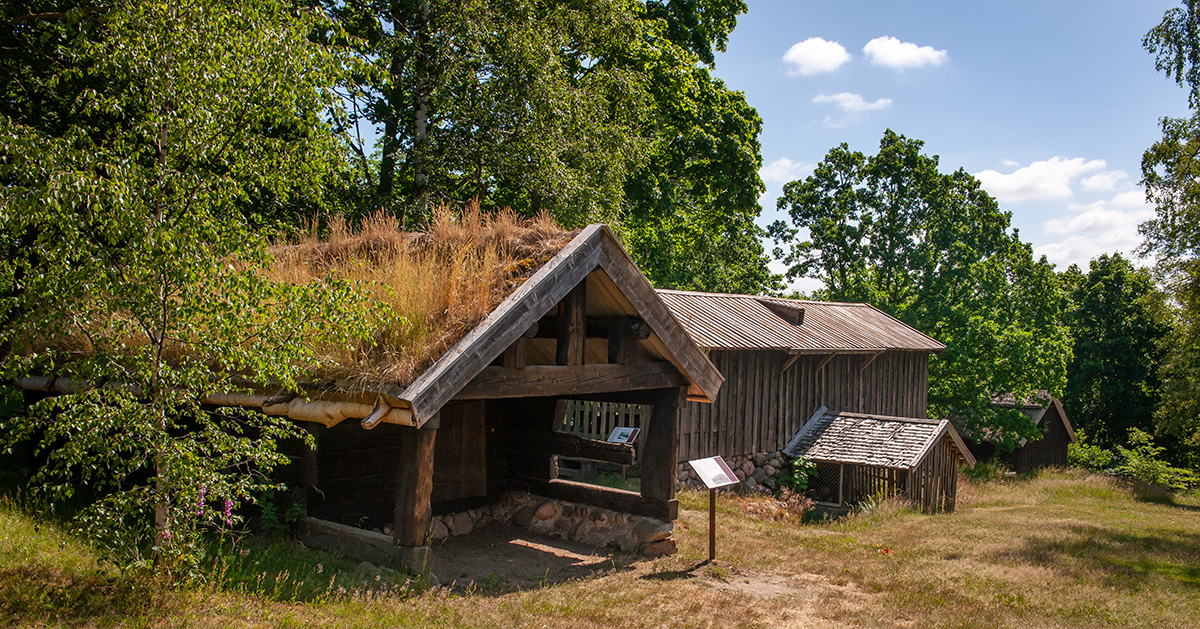
12. Tool shed
The tool shed comes from the village of Stora Slätthult, Krogsereds parish in Falkenberg municipality. There once was a water driven mill on the border between Krogsered and Drängsered, the ownership was disputed and it was finally dismantled and sold to Stora Slätthult. There the lumber was used to build a tool shed with a cellar and in 1925 the shed was moved to Hallandsgården. The famous writer August Bondeson has written about ”Jon from Slätthult” and this building is now all that remains of his farm. The shed itself however was built after Jon had passed away.
Book a guided tour at Hallandsgården
From April to mid-October, we offer guided tours at the open-air museum Hallandsgården.
Weekdays (Mon–Fri, 8 am–5 pm): SEK 1,500 per group
Evenings and weekends: SEK 2,200 per group
Additional hour (or part thereof, if a longer tour is requested): SEK 800 per group
Maximum group size: 30 people
Duration: approx. 1 hour
Book via bokning@hallandskonstmuseum.se or call +46 (0)35 16 23 00.